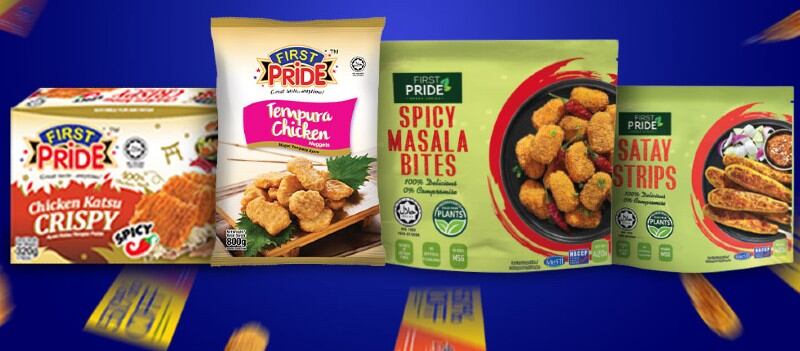Poultry and protein heavyweight Tyson Foods is well-known for its wide range of RTC frozen meat products from chicken nuggets to chicken drumlets, but according to the firm’s APAC Vice President Commercial Lee Yeong Sheng, simply putting out traditional favourites is no longer enough to satisfy consumers within the region.
“There is no doubt that APAC consumer tastes are getting more and more demanding when it comes to food products, and we have to keep up even when it comes to traditional favourites like nuggets or drumsticks,” Lee told FoodNavigator-Asia.
“Basically, no longer can a nugget just be a plain nugget – there must be some sort of twist or unique flavour to it, and now one of the most popular flavours consumers are looking for is spicy so we have to consider this when launching new types of nuggets, and even with our recent plant-based First Pride range, we launched with Spicy Nuggets as a keystone product instead of plain nuggets.
“At the same time, the consumer is also demanding more international tastes to be incorporated into these products, but they are also becoming more savvy and well-versed in these international flavours such as honey or mala – which means we need to also make sure these flavours are carefully crafted.”
In addition, Lee also highlighted convenience as the biggest driver behind the RTC foods category, citing this as a remnant of the COVID-19 lockdowns.
“Consumer demand for convenience has definitely been driven by COVID-19 when everyone had to work from home and cook at home – it’s one of those trends that was born out of necessity but is now here to stay for a long time,” he said,
“Even as things open up and people go back to the office, it is unlikely that consumer preference will be to spend more time cooking dishes from scratch, but instead more are seeking out options that can be consumed on-the-go and are also easy to prepare.
“This trend drove quite a bit of growth in the overall frozen foods category due to the nature of these being easier to prepare, but what has been even more prominent was the increased demand for variety and different formats, so that there would be more types of convenient choices to fill lunchboxes e.g. chicken strips to make a tortilla and plant-based spicy nuggets for that spicy kick.”
Provenance also important in processed foods
Although processed and frozen foods tend to have a poorer reputation than fresh foods when it comes to traceability and provenance, Lee added that this is very much changing within the sector as more and more consumers are placing added focus on this.
“There’s a lot of concern about the source of origin of where the chicken or soy used to make the products are from, how these are processed, how the products are developed, how strong the health, wellness and sustainability credentials are and things like that,’ he said.
“Overall they want to know the farm-to-table process even for their nuggets and fish fingers, and we are well aware that there will be increasingly more demands for supply chain transparency regarding how these are sourced, produced and made.”
In order to ensure its innovation is constantly in line with consumer demands, Tyson has opted to establish a special team within the firm to perform in-depth consumer research.
“It really doesn’t matter at all what we think of our products, but it’s what consumers think that is important or even the tastiest, most innovative product in the world won’t sell,” said Lee.
“One strategy we’re finding to be quite effective when it comes to innovation though is to identify the pain points and solutions consumers are facing whilst talking to them, and proceed to reverse engineer products from these to meet their needs.
“So for instance if we find that consumers are complaining that Korean fried chicken flavours – which are actually picking up all over the world even in markets like India – are hard to find in India, we will work to reverse engineer a suitable product to solve that pain point, and that is how we aim to be consumer-centric in our NPD.”





